The huge wave of IoT that has surged worldwide and in recent years in many different industries has led to heavy investment in vertical product development and applications. Without exception, Innodisk, which focused primarily on the field of industrial control in the past, is now actively expanding into this territory.
Recently, during the conference "Pushing forward AIoT: The integration of cloud technology and industrial IoT," held in The Westin Taipei on October 17, Innodisk led its subsidiaries Aetina, AccelStor, Millitronic and Antzer Tech, as well as business partners, Super Micro and Ironyun to present extraordinary seminars discussing the many facets of AIoT including saving, transmission, computing, and applications of the AIoT framework.
Data as the core asset to establish AIoT ecosystem
The chairman of Innodisk, Randy Chien, spoke about the surge of IoT as a result of the previous popular trend of cloud technology. Together with the maturity of artificial intelligent as the last piece of puzzle, it should be recognized that regardless whether it is cloud, IoT or AI technology, "data" is a core asset. As the leading company of industrial storage and memory, Innodisk has put immense amount of effort into data storage technology, and accumulated over than 2,500 clients, with applications covering almost all vertical markets. In this wave of AIoT revolution, Innodisk continues to critically assess how the data will be stored, transmitted and applied in the future.
Therefore, starting a few years ago, Innodisk has begun investing in the AIoT sector, successively setting up companies including Aetina, AccelStor, Millitronic and Antzer Tech. With Innodisk at the helm, the 5 companies focus on AIoT data technology as their core investment, each taking a different role to provide related products, together with partners such as Super Micro and Ironyun to form a complete AIoT solution and a complete industrial ecosystem.
In the future, Innodisk aims to continue focusing on storage technology as its core investment. On the topic of "Expansion of AIoT sets off a new form of integration," Special Assistant Howard Fu indicated that since AIoT is mainly used in vertical applications with vastly different devices and equipment that could no longer be provided by a single company, there is a need for products that can integrate various different fields and industries.
Regarding system development, new communication and operation technologies continued to emerge; however, as Fu mentioned, the ultimate goal is always real life application no matter what kind of new elements are added. Therefore, when designing a system, it is vital to fully understand the demand of a particular field. In AIoT system applications, Fu believes that enhancing stability, security, robustness, sustainability and expandability are key elements and Innodisk had long been committed to designing products with these in mind.
Fu summarized the future of AIoT in 4 letters: A, I, T and S, that is, Applications, Integration, Tool and Security, where Applications are products designed for various kinds of applications and specialties, Integration refers to integrating various components with software and hardware, Tool transforms complex technology into a convenient tool, and S stands for data security, allowing data to be stored intact and protected by encryption mechanisms.
Edge computing combined with fast transmission systems greatly improve system performance
After being stored, data must be further processed to be used in subsequent applications. Joe Lo, General Manager of Aetina, on the topic of "GPU Edge Computing Age: Smart Decision, Perfect Implementation" pointed out that the past IoT era was based on centralized computing with cloud platforms, but this method will overload the cloud platform resulting in latency. Hence, edge computing becomes an essential design for some of the applications. Aetina's approach is as follows. The data is first processed by the cloud to establish an operation mode, the operation mode is then placed on the terminal device, so that the terminal device can quickly process the situation of the applications, thereby improving system performance.
The core computing platform of Aetina is based on NVIDIA's GPU Jetson Platform. Compared to ASIC, CPU, FPGA and other computing units, the Jetson Platform features fast deployment, low power/high performance, high scalability and high compatibility and is thus the preferred choice. Up to this date, the Aetina edge computing platform has been applied successfully in applications such as security surveillance, retails, transportations, drones and factories. Luo also pointed out that the products have been fully integrated and will help system manufacturers to quickly launch products and reduce the processing time of end users.
As edge computing is an important aspect of AIoT, the processed data must be transmitted quickly and stably. Alex Lin, the General Manager of Millitronic said that the 5G's high-speed transmission will play a paramount role in contributing to the future smart cities and other related applications. WiGig invested by Millitronic will be the last puzzle piece from 5G to end user application.
In Alex Lin's speech on the topic of "5G Wireless Gigabite IoT High Speed Node," the future trend for data transmission in the 5G era is discussed with the participants. He pointed out that wireless transmission is a necessary technology for smart cities in the future, and Millitronic, one of the few companies that has the capability to create customizable antenna and USB3.0 full-speed products, combined with the software and hardware integration capabilities and the support of the diverse product line in Innodisk, proposed a unique solution of high-speed transmission AIoT to the market.
WiGig of Millitronic solved the delay problem caused by uploading data on the cloud through data transmission between objects, and gigabit transmission speed of in the 60GHz band, with advantages of anti-interference and low delay to make the data exchange in the system much faster. In some areas where the data speed requirement is extremely high, such as in medical field or in unmanned vehicle system, WiGig will play a significant role for transmission technology.
Alex Lin also introduced two WiGig systems there, including AIoT series and 5G Virtualization series, the former of is developed by Millitronic, Aetina and, Innodisk and includes AI algorithms, software and hardware integration, storage technology from Innodisk, while the latter of includes a virtual platform with aUSB module design and different kinds of I/O interface, providing fast and flexible transmission.
Both terminal and cloud technology have equal importance in a complete AIoT framework. Innodisk focuses on data processing in the terminal and collaborates with companies that specialize in cloud server. One example is Super Micro, which is an important business partner of Innodisk.
Simon Wang, the vice general manager of Super Micro, pointed out in the session of "Edge computing, server integration and collaboration in AIoT infrastructure" that it was generally thought in the market that Super Micro mainly provides server solutions, but in fact, the company also has products line of the terminal. Having products that allow integration of the terminal and cloud will optimize the use of the AIoT system. In fact, Super Micro developed a complete product line from terminal to cloud, including GPU servers that covers the computing, and Super Storage for storing data. Moreover, the company also provides multi-node computer system for x86 requirement.
Simon Wang expressed that in AIoT system, the most important features of AI are training and inference, each of which has a different requirement. The training part is mainly used to develop AI model, requiring recursive procedure of big data, thereby demanding higher efficiency of GPU and communication. On the other hand, inference involves deploying the model to optimize and compress the model, and let the system run quickly through multiple independent GPUs. In the AIoT field, Super Micro proposes different frameworks for different needs, providing corresponding products and platforms from cloud to terminal, from training to inference, so as to provide a complete solution to meet market demand.
Develop vertical applications to build the optimized system
Vehicle application is one of the main markets of AIoT. Irene Cheng, the manager of Antzer Tech introduced the application and platform design trends of the Internet of Vehicles with the title "Application of Internet of Vehicle with CAN Bus." CAN Bus is an important communication standard for automotive systems and has many applications in both in-line market and aftermarket. She specifically described how CANBus can be used in fleet management application in the aftermarket.
Fleet management system is an important item in logistics, generally achieved through establishing a connection between the vehicle and the management system in order to have a firm grasp of the vehicle movement and other information. However, problems such as driver's behavior, acquisition of the vehicle condition, tracking dead corners and reducing operation cost are some of the frequent problems encountered for developing such system.
Antzer Tech has provided solutions for the 3 problems above. The acquisition of information on driver behavior and vehicle condition is achieved through a complete vehicle communication protocol, to acquire data corresponding to different parts of the vehicle during the course of driving, along with ADAS to remind driver of the road condition and at the same time monitor driver's behavior. For detection of dead corners of the road, the company provides three inertial navigation GPS: UDR, ADR, CAN to ADR. Even when located in a tunnel, the back end can accurately grasp the vehicle position with extremely low error rate. In terms of cost, the company launched NB-IoT and LoRa trackers to effectively reduce monthly communication fees, allowing the company to afford a complete fleet management system within a limited budget.
Another important aspect in AIoT is security surveillance. Regardless whether it is in the application or technical level, the security surveillance is already a mature market. On top of that, the rise of AI further gives renewed impetus to the industry. Patrick Wu, the Vice President of Ironyun indicated that the recognition capability of the deep learning algorithm of AI has exceeded the capability of human eyes. Comparing with conventional image recognition technology, AI not only greatly raises the compatibility of the system, but also strengthens the system performance.
Patrick Wu also mentioned that closer computing operation near the data acquisition location allows the system's real-time deployment to be more flexible, and also transforms the monitoring from passive investigation by investigating the video tape after an event has happened into a proactive detection of key events to give early warning alarms of such events. Based on AI foundations, various image analysis systems have been developed by Ironyun, including object detection, intrusion detection, face recognition, face search, license plate recognition, and human/car calculation to provide intelligent monitoring solutions.
Patrick Wu also gave an example where ESPN from the US has used their company's AI-NVR surveillance system which is suitable for various different kinds of weather condition to effectively reduce errors. He said that the detection distance AI-NVR surveillance system could reach up to 50 meters and supports the current MileStone VMS system. In other words, the system is capable of reducing the system false positive rate while achieving accurate detection, thereby making the goal of intelligent security system possible.
Regardless whether it is vehicle or security surveillance, edge computing requires processing large amount of data. In order to make the computing more accurate, it inevitably needs an upgrade in data storage technology. On the topic of "All-round Evolution of AI Cloud Infrastructure: The Next Generation Relies Fully on Flash Storage," David Kao, Vice President of AccelStor, mentioned the commitment of developing flash storage software technology, with several patented technologies to further optimize the flash storage software technology in order to take the SSD performance to a next level.
David Kao also said, in order to reduce system latency, edge computing needs to be a part of AIoT. To enhance the speed of computing, not only the processor but also storage technology is a key element. NeoSapphire All-Flash Array developed by AccelStor allows for a much faster process of reading and writing data.
The system in Kaohsiung Police Station is used as an example. It takes at least 30 minutes to carry out 100 million license plate search and machine learning through AI, but it only takes less than 10 seconds with the NeoSapphire platform of AccelStor in SATA/SAS SSD module, the standard rack-mount platform plus the FlaxiRemap AFA algorithm.
He said, comparing with the random writing process when receiving external data in the past, FlaxiRemap rearranges the written data into sequence data and writes it into the memory, which doubles the durability and SSD life. AccelStor has also strengthened the security mechanism which is extremely suitable in areas where large amounts of data and high security are required, such as the medical and retail field.
In this conference, it is obvious that Innodisk's ecosystem comprises different levels of data processing technologies. Through such fully supported data processing capability, system vendors and terminal users will surely find suitable technologies and products based on their own needs, and in addition, these technologies can be integrated with each other to provide a complete solution tailored to their needs, thereby giving them the needed competitive edge.

Innodisk hosted an AIoT Forum together with partners and its subsidiaries Aetina, Accelstor, Millitronic, and Anzter Tech.

Randy Chien, president of Innodisk Corporation

Howard Fu, special assistant of Innodisk Corporation
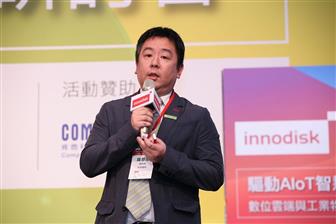
Joe Lo, president of Aetina Corporation
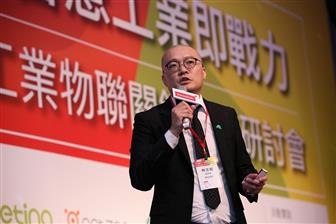
Alex Lin, president of Millitronic
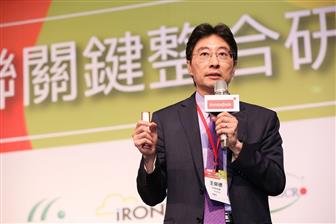
Simon Wang, vice president of Super Micro Computer

Irene Cheng, president of Antzer Tech
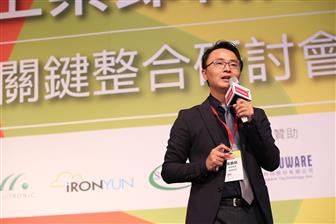
Patrick Wu, vice president of IronYun
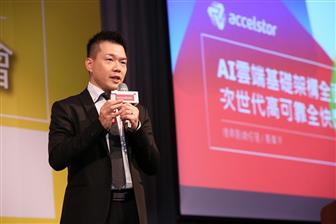
David Kao, vice president of AccelStor
DIGITIMES' editorial team was not involved in the creation or production of this content. Companies looking to contribute commercial news or press releases are welcome to contact us.



